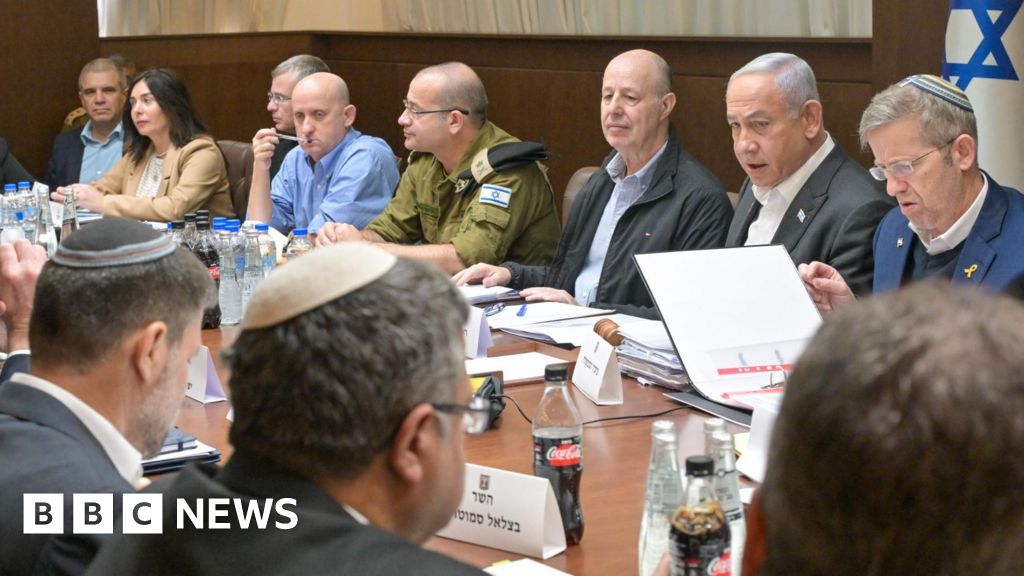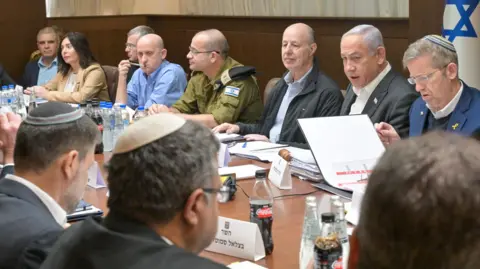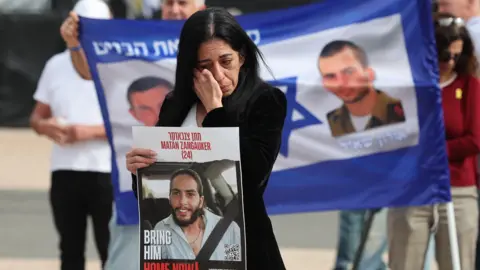Physical Address
304 North Cardinal St.
Dorchester Center, MA 02124
Physical Address
304 North Cardinal St.
Dorchester Center, MA 02124

 Press service of the government of Israel
Press service of the government of IsraelIsrael’s government has approved a new deal for a Gaza ceasefire and the release of hostages from Hamas, paving the way for it to come into force on Sunday.
The decision was made after many hours of discussions that lasted until late at night. Two far-right ministers voted against the deal.
The security cabinet earlier recommended ratification of the agreement, saying it “supports the achievement of the war’s objectives,” according to Prime Minister Benjamin Netanyahu’s office.
It came hours after the prime minister’s office and Hamas said they had finalized the details of the deal, two days after it was announced by brokers Qatar, the United States and Egypt.
Under the deal, 33 Israeli hostages still being held by Hamas in Gaza after 15 months of conflict will be exchanged for hundreds of Palestinian prisoners in Israeli jails during the first phase, which will last six weeks.
Israeli forces will also withdraw from densely populated areas of Gaza, displaced Palestinians will be allowed to begin returning to their homes, and hundreds of aid trucks will enter the territory every day.
Talks on the second phase – which should involve the release of the remaining hostages, the full withdrawal of Israeli forces and the “restoration of sustainable peace” – will begin on the 16th.
The third and final phase will involve the rebuilding of Gaza – something that could take years – and the return of any remaining bodies of the hostages.
Qatar said the hostages to be released in the first phase would include “civilian women, military women, children, the elderly, and sick and injured civilians.”
Israel says three hostages are expected to be released on the first day of the ceasefire, and other small groups of hostages will be released at regular intervals over the next six weeks.
The Israeli military launched a campaign to destroy Hamas – which is banned as a terrorist organization by Israel, the US and others – in response to an unprecedented cross-border attack on October 7, 2023, in which around 1,200 people were killed and 251 taken hostage.
More than 46,870 people have been killed in Gaza since then, according to the Hamas-run territory’s health ministry. Much of the population of 2.3 million has also been displaced, there is widespread destruction and there are severe shortages of food, fuel, medicine and shelter amid the struggle to help those living in need.
Israel says 94 hostages are still being held by Hamas, 34 of whom are believed to be dead. In addition, there are four Israelis abducted before the war, two of whom are already dead.
 EPA
EPAAhead of the Israeli government’s vote on the deal, Culture Minister Miki Zohar of Netanyahu’s Likud party said: “This is a very difficult decision, but we have decided to support it because it is very important for us to return all our children, men and women. home.”
“We hope that in the future we will be able to complete the work in Gaza,” he added.
But far-right National Security Minister Itamar Ben-Gvir said he was “horrified” by the details of the deal, including that “life-sentenced terrorists” would be released in exchange for hostages, and called on other ministers to join him in the vote. against it.
On Thursday, Ben-Gvir announced that his Jewish Power party would withdraw from the ruling coalition if the deal was approved. But he said he would not topple the government in parliament and would return “when the war against Hamas resumes in full force.”
Finance Minister Betzalel Smotrich, another far-right politician opposed to the deal, said his religious Zionist party would withdraw if the war did not resume after the first phase ended.
The three-phase structure has also caused division and anxiety among some hostage families. They fear that their relatives will be left in Gaza after the completion of the first phase, and call on the government to ensure the implementation of the second and third phases.
“For 469 days, our loved ones were left in captivity, and now, finally, there is hope,” said Einav Zangauker, whose 25-year-old son Matan was kidnapped from Kibbutz Nir Oz.
“This agreement must be followed to the end to bring everyone home and end the war. An end to the war, the return of all and a return to normal life is in Israel’s interest.”
 Reuters
ReutersA cabinet vote was expected on Thursday, but the meeting was postponed after Netanyahu accused Hamas of failing to implement parts of the deal – allegations Hamas has denied.
Early on Friday, the Prime Minister’s Office announced that the Israeli negotiating team in Doha had finalized the agreement.
Hamas also released a statement saying “obstacles” over the terms of the deal had been resolved by dawn.
A source close to Hamas told AFP that the first three hostages to be released would be women.
On Friday, Israel’s Justice Ministry released a list of 95 Palestinian prisoners it said would be part of the first group to be released in exchange for hostages. Among them are 69 women, 16 men and 10 minors, according to AFP.
 Reuters
ReutersA meeting was also held in Cairo on Friday to discuss the mechanisms for implementing the agreement, a senior Egyptian official told the BBC.
All the necessary arrangements have been agreed, including the establishment of a joint operational cabinet to ensure compliance, which will include representatives from Egypt, Qatar, the United States, Palestine and Israel, the official said.
Egypt’s state-run Al-Qahera News TV also reported, citing a source, that they had agreed to facilitate the entry of 600 aid trucks per day during the ceasefire.
This would require a more than 14-fold increase from January’s UN daily average of 43 trucks. But Rick Pieperkorn, the World Health Organization’s representative in Gaza, said “the opportunity is very strong” if the Rafah crossing with Egypt and other crossings open.
WHO also plans to supply a number of prefabricated hospitals to support the devastated health sector. Half of Gaza’s 36 hospitals are not functioning, and the rest are only partially operational.
There has been no respite for the Palestinians in Gaza since the ceasefire agreement was announced on Wednesday night.
The Hamas-run Gaza Civil Defense Agency said 117 Palestinians, including 32 women and 30 children, had been killed in Israeli strikes since then.
Tamer Abu Shaaban said his young niece was killed by shrapnel while playing in the school yard in Gaza City, where her displaced family was hiding.
“Is this the truce they’re talking about?” he told the Reuters news agency, standing next to her body in the morgue. “What did this young lady, this child, do to deserve this?”
The Israeli military said Thursday afternoon that it had struck 50 “terrorist targets” across Gaza in the past day and had taken measures to minimize civilian casualties.